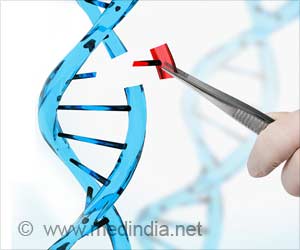A research team led by Chiranjeevi Bodda in Søren Paludan's lab, discovered a molecular mechanism that helps herpes simplex virus infect the brain. Details are published in the Journal of Experimental Medicine.

‘Drug that inhibits the herpes simplex virus's ability to remove ubiquitin, allowing brain cells to elicit an efficient antiviral response, could treat infections caused by HSV1.’





STING protein plays an important role in immunity, and it is activated by a virus's DNA during viral infection. STING initiates a cascade of cellular actions that help fight the invader. Those initial efforts include gene activation and production of cytokine proteins such as type I interferon (IFN) that boost the immune response. "HSV1 has evolved multiple mechanisms to evade the host cells' induction of type I IFN," Bodda explains, "but how HSV1 evades the type I IFN response in the brain were not well understood."
The research team worked to identify proteins encoded in HSV1's genome that promoted HSV1's immune evasion in the brain. They infected mouse brain cells grown in culture with HSV1 mutants that were missing key genes, or whose gene activity was altered, and found that a HSV1 containing a mutated VP1-2 gene showed increased innate immune responses.
Mice showed a similarly robust immune response against HSV1 with mutant VP1-2. This indicated that normal VP1-2 suppresses immunity.
The key difference between normal VP1-2 and the mutant VP1-2 was the mutant lacked its ability to remove a post-translational modification, called ubiquitin, from other proteins inside host cells after it infects them. Ubiquitin is one of several post-translational modifications known to modulate the STING cascade's immune response.
Advertisement
"Our study shows that HSV1 targets STING ubiquitination in the brain to promote viral infection and potentially progression to herpes simplex encephalitis," Bodda says.
Paludan adds that though the study focuses on herpesviruses, there are parallels to the coronavirus and relevance to the COVID-19 pandemic. "Our results lead us to hope that if we can prevent viruses from blocking STING, then we can prevent the virus from replicating. That could pave the way for new principles for treatment of herpes, influenza and also the coronavirus."
Source-Eurekalert












